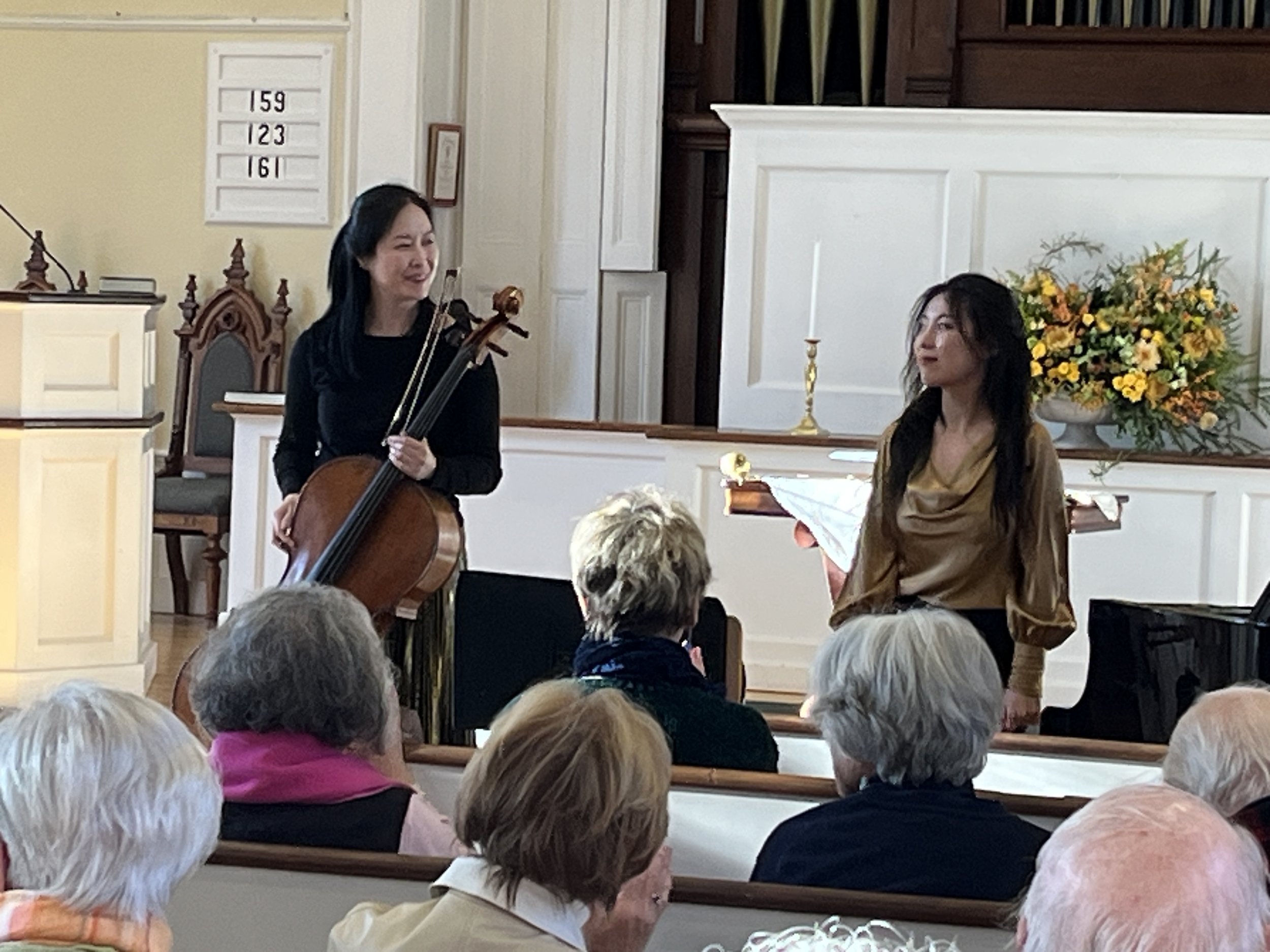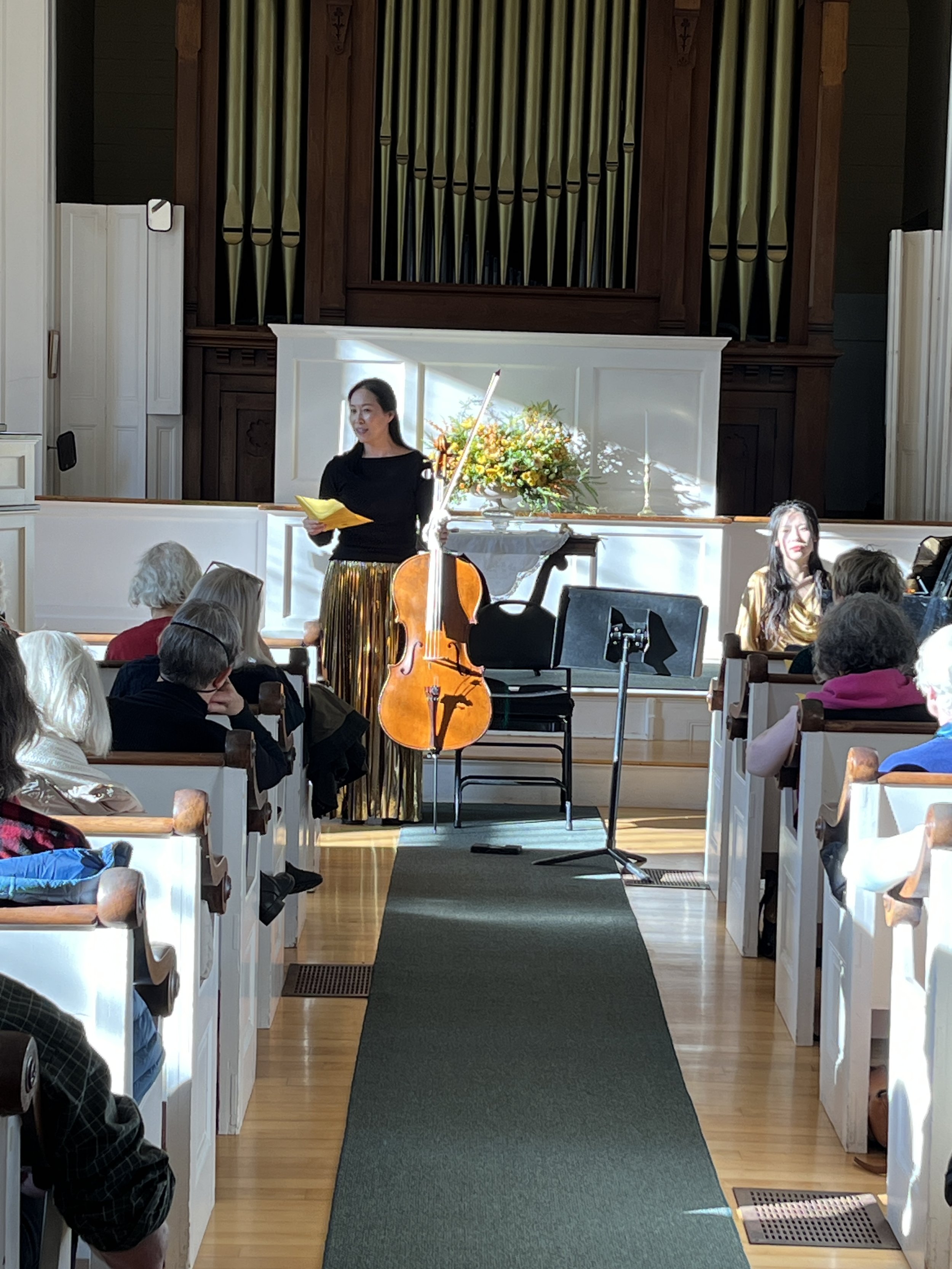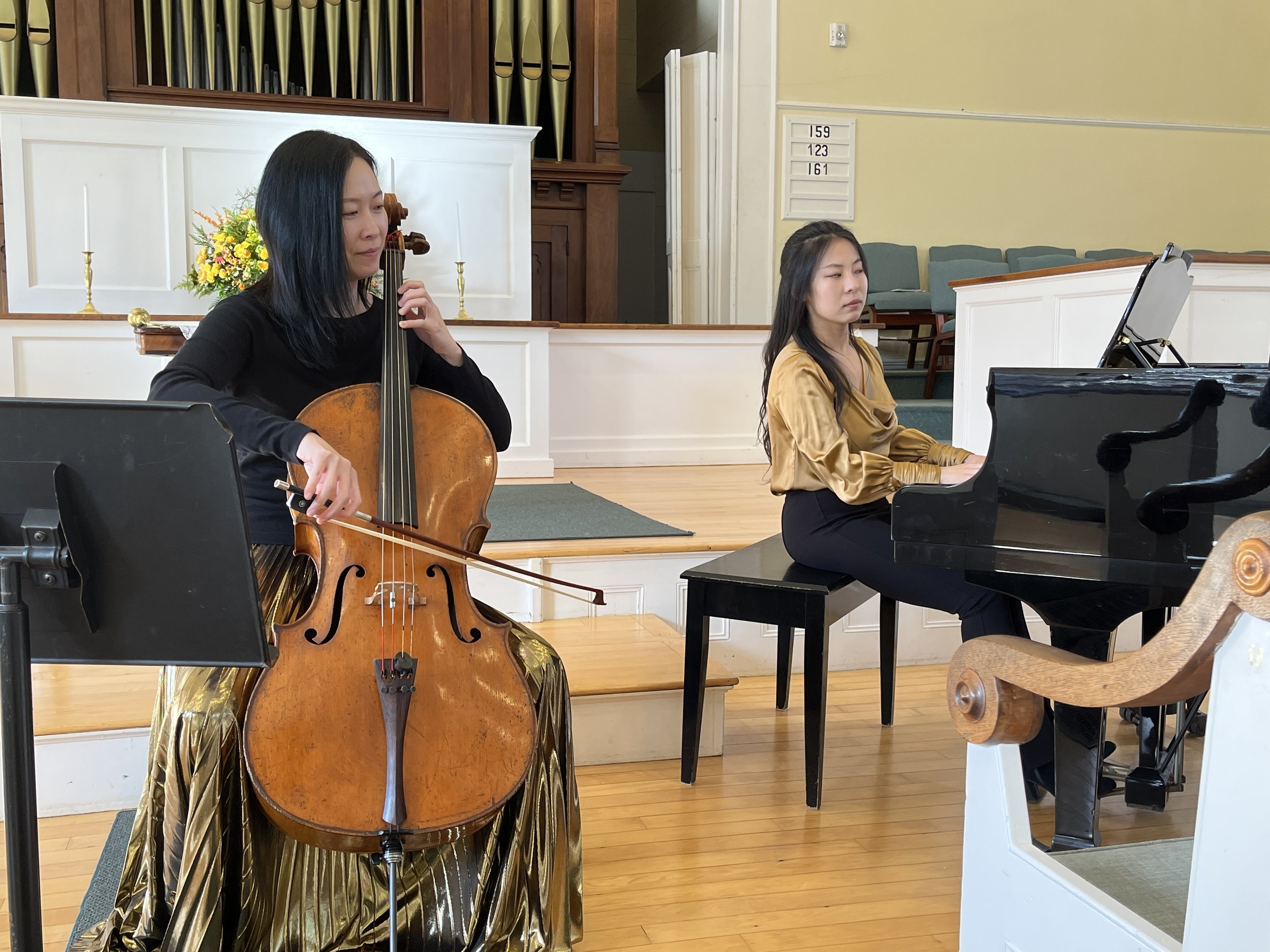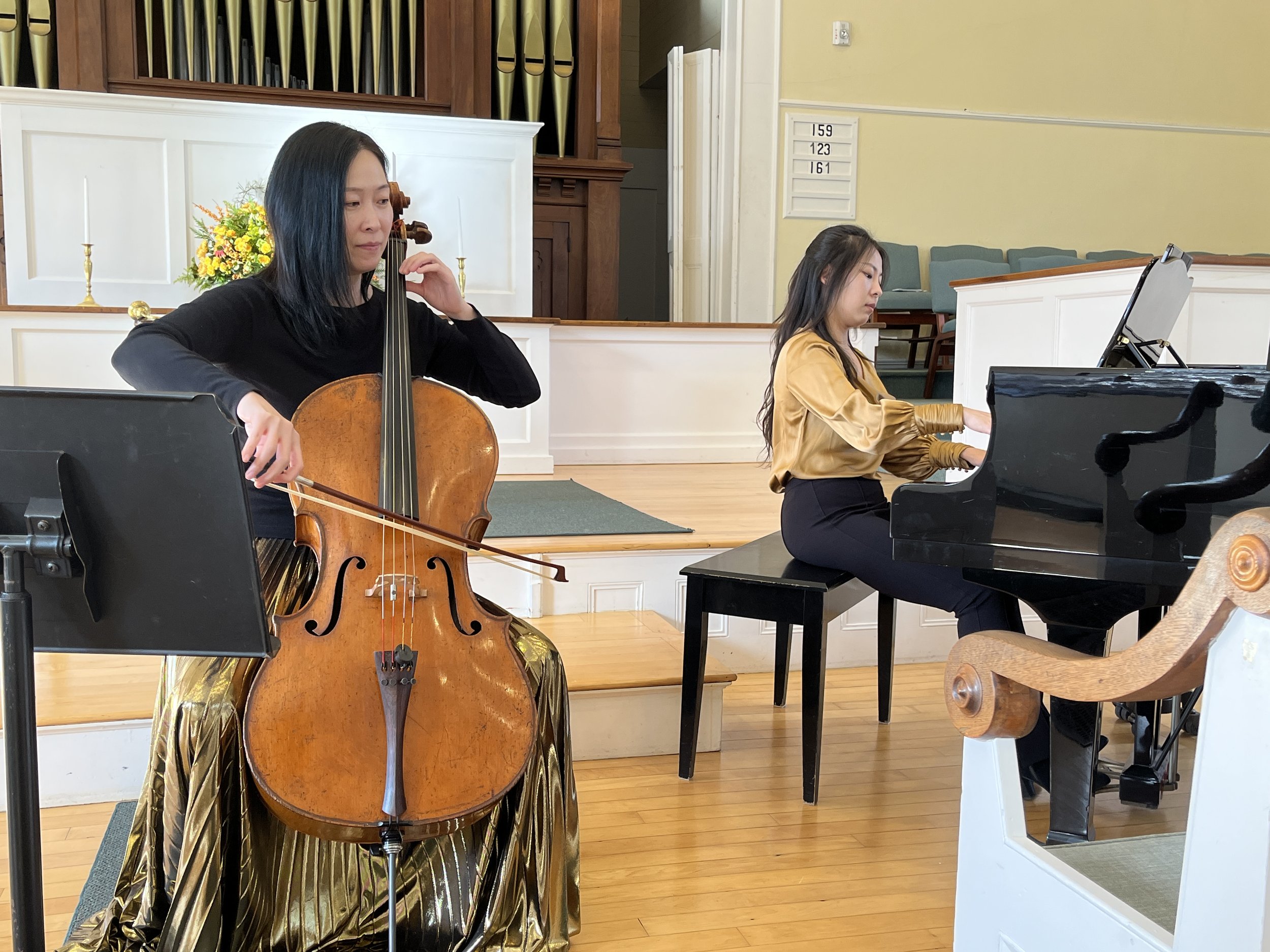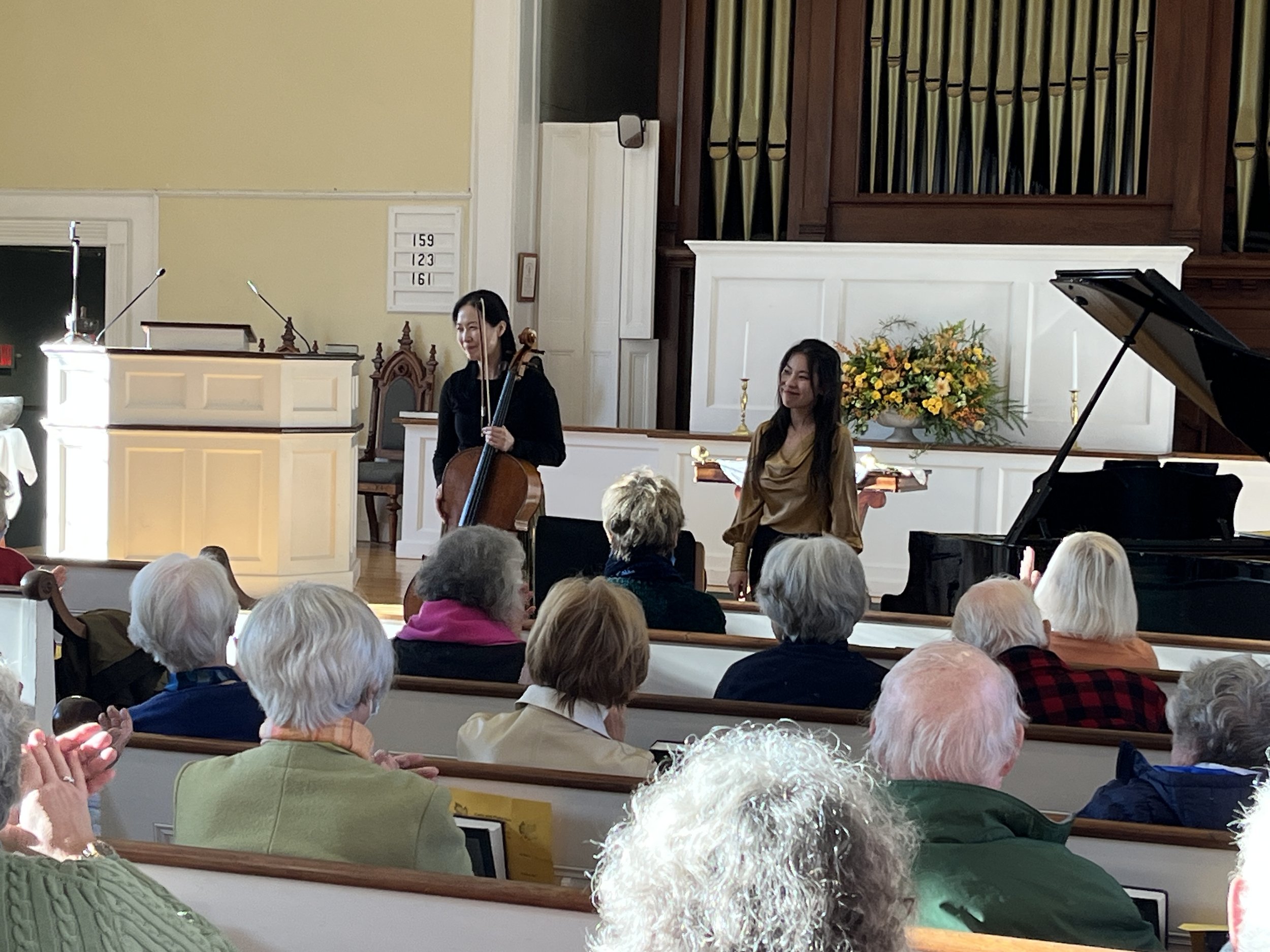Thayer Organ
Organ Restoration Complete
A Brief History
Since 1956 our organ has been nationally known by organ enthusiasts as unique for its bright sound and musical flexibility. It is very unusual that an organ built in 1875 should be so strident. How does one explain this organ and why is it in Woodstock?
Founding members of the Organ Historical Society, E. A. Boadway and Robert Reich “discovered” it in 1956. Having been aware that once prominent Boston organist, W. Eugene Thayer (1838—1889), once owned an organ, it was a small matter to match the names on the stop knobs with the stop names published by Thayer in a journal entitled The Organists’ Journal & Review. Thayer was a colorful and influential character in Boston’s organ scene, so finding an organ carefully specified by him indicated a direct link with the thinking of the times.
Thayer had an interesting development. He studied piano only at age 12, but continued shortly with organ lessons with Harvard University’s John Knowles Paine, a devotee of German organ music, as was another prominent Boston trained organist, Dudley Buck. Thayer went on to study in Germany in 1865 with Carl August Haupt and Wilhelm Friedrich Wieprecht. He embarked on a concert tour of Europe in 1866 including an all-Bach recital at the Thomaskirche in Leipzig, J. S. Bach’s own church.
Already in 1863 a large four manual German organ made by the Walcker firm had been installed in the Boston Music Hall. Thayer viewed his studio organ as a model for American churches, in which the organ culture could be described as “quietly English.” This strident organ with double names for each stop, one in English and one in German, makes sense based as it must have been on his experience in Germany. But a mystery remains as to why he sold the organ only three years later in 1878 to a religious society. Did the public simply not appreciate this model organ based on German instruments?
All we know now is that he soon took church jobs playing in New York leaving Boston behind. Curiously, the public also rejected the Boston Music Hall organ which still exists in altered form in Methuen, Massachusetts.
But the recent organ restoration may reveal a clue for another reason as to why Thayer sold the organ. The three chests on which the pipes seat revealed extensive old and more recent repairs. The table tops each made of a single sheet of wood had been extensively nailed down. More than 550 such nails were found. Ring nails were probably used by the Andover Organ Company in 1969, but the presence of square nails suggests an early repair attempt, perhaps made about the time Thayer sold the organ. The organ may have been damaged by central heat early in its history. The recent restoration addressed this problem by replacing the table tops. But there is more. The organ came up for sale yet again in 1881 having passed rather quickly from the religious society to Horticultural Hall.
Universalist Church member Justin MacKenzie sought out another prominent Boston organist, Woodstock born Samuel B. Whitney (1842—1914), to find a suitable organ for our church. Whitney was not inclined toward German liturgical music, rather toward the progressing English traditions, but it was he who recommended that our church buy Thayer’s organ. The second mystery is why was this English music devotee so interested in a German-styled organ or was the organ merely cheap? A clew (or red herring) may be found in the Vermont Standard published 17 March of 1881…“The Universalist Society have been enabled by a few generous subscriptions to purchase a pipe organ for the church, and have secured a great bargain in an organ used a few years in Horticultural Hall, Boston.” The organ was considered a bargain; there was little or no competition from other buyers. Whitney gave at least three recitals on the organ after it arrived in Woodstock, so he may have liked it very much despite his English leanings.
John Atwood
As a side issue, extant church records have not revealed who the benefactors were, but Justin MacKenzie who searched for an organ through Whitney was probably one. The shipping address via the Woodstock Railroad is “A. G. Dewey” who owned the woolen mill at the head of Quechee Gorge. Probably Dewey paid at least the shipping of the organ to Woodstock, and both men are good candidates to have been major benefactors. [Whenever you see stretches of railroad bed near Rte. 4, try to imagine our organ crated in a box car chugging up through the the Ottauquechee Valley to its current location in March! It must have been carted from the Railroad station to the church by wagons.]
The Vermont Standard entry quoted above indicating that the organ was used in Horticultural Hall, Boston is confusing. Was Thayer’s studio converted first into a church, then into a hall featuring flower shows? Was the organ moved twice before coming to Woodstock? The name “Horticultural Hall” was found penciled into a wood support during the restoration, so the entry is probably accurate. In any case, the organ did not remain long among its early owners.
The “discovery” of this organ in 1956 was made in a very different cultural context than when Thayer owned it, and it is during this time eighty years after its construction that it attracted genuine interest. The organ was the second to be awarded a plaque by the Organ Historical Society. Noted organist, E. Power Biggs issued a recording of it on Columbia Records in which he debuted Variations on America written by the rebellious teenager, Charles Ives. There was a re-newed interest in J. S. Bach and the organs that he played. Organs would be made specifically to play Bach’s music, but here was one already made in 1875. But research would prove that Thayer loved to play Bach, and according to diary entries organists in Germany loved to hear him play it. This organ, odd for its time, came about through the vision of W. Eugene Thayer, but its genuine appreciation would await 80 years. As restorers, David Moore and I have been awed by how well this organ renders Baroque music, based as it is on voicing styles characteristic of the late nineteenth century. According to pipe voicing rules, it simply shouldn’t sound as appropriate as it does for Baroque music! Probably contemporary organ builders of Thayer’s time were totally unaware of voicing techniques employed in Baroque organs.
John T. Atwood, for The Organ Committee
Music In Our Sanctuary
John Atwood – 19th Century Vermont Pipe Organs
Filmed on Oct 6, 2024
Organ historian and musician and friend, John Atwood, spoke at the Bridgewater Historical Society a few weeks ago, discussing various organs and their history. What a fascinating program!
"John Atwood discusses how pipe organs have developed in Vermont from 1814 to 1900, and working with them makes the nineteenth century real, often in unexpected ways. The presentation also includes the difference between the pipe organ and a reed organ. The program is based on John Atwood’s personal experience with A. David Moore and the research of E. A. Boadway." https://bridgewaterhistory.org/john-atwood-19th-century-vermont-pipe-organs/
Whitney Organ Recital Series at North Chapel
After a lapse of 10 years The S. B. Whitney Organ Recital Series resumed this year on Sunday the 4th August, at 3:00 pm at the North Universalist Chapel Society! Pentangle Arts was proud to promote this first recital of a new annual series, performed by the Talented Jonathan Denham.
Thanks to North Chapel organist John Atwood for brining the series back and organizing this recital.
Jonathan is Music Director and Organist at the First Congregational Church of Woodstock, VT where he leads services, a worship team, and has revived the Revere Handbell Choir. Come to North Chapel on the 4th to hear music of Bach, Handel, Mendelssohn, and The Piano Guys.
More about the organist:
Originally from upstate New York, Jonathan studied with Dr. Judy Congdon at Houghton University, and holds a Bachelor of Music in Organ Performance. After graduating in 2019, he learned of the open music position at FCCW, and moved to Woodstock in 2020. At the church, Jonathan leads services, a worship team, and recently, a revival of the Revere Handbell Choir.
Along with music duties, Jonathan serves as Property Manager and Custodian for the church. He, his wife Anne, and daughter Joy love the outdoor activities in Vermont and New Hampshire and look forward to continuing exploring, hiking, swimming, and skiing in the area.
Jonathan has given various recitals around New York, including at St. Joseph’s Cathedral in Buffalo with its 1877 Hook and Hastings organ, and at other churches in Jamestown, Binghamton, and Albany. In 2018, he was awarded the Undergraduate Scholar Award by the Presser Foundation for his work at Houghton University. Over the years, he has served in a variety of churches, including Faith Crossroads in Schenectady, Cuba UMC in Cuba, NY, The Cathedral of the Immaculate Conception in Albany, and The Union Church of Lima, Peru. Of all the aspects of his musical work, he most enjoys leading exciting congregational singing and sharing the beauty and awe given us in the great organ works.
The Series:
The series title, The S. B. Whitney Organ Recital Series commemorates Samuel Brenton Whitney who grew up in Woodstock, became one of the founders of the American Guild of Organists and became the music director at the Church of the Advent in Boston, Massachusetts. The organ at the North Universalist Chapel Society made in 1875 by the Hutchings-Plaisted Company once served in the studio of Boston organist Eugene Thayer. It came to Woodstock in 1881 through Whitney’s efforts. The organ was recorded in 1959 by E. Power Biggs who debuted Variations on America by a slightly rebellious 16-year-old composer Charles Ives.
Read more about our organ in an article, written by North Chapel organist John Atwood, on our website here: https://www.northchapelvt.org/music-1/thayer-organ
From the Early Music concert in May, 2024
North Chapel Classical Music Series 2024
6 Concerts at North Chapel
See more details as they become available here: https://www.northchapelvt.org/music
April 21, 2024 - Rose String Quartet
Gabriel Anker (violin), Liana Branscome (violin), Rachel O’Connor (viola) and Alonso Restrepo (cello)
May 12, 2024 - Carol & Sam Ou (cello duo)
June 16, 2024 - Jacky Li (French horn) and Kyra Zhao (piano)
September 15, 2024 - Liana Branscome (violin) and Victor Rosenbaum (piano)
October 20, 2024 - Balourdet String Quartet
Angela Bae (violin). Justin De Fillipis (violin), Benjamin Zannoni (viola), Russell Houston (cello)
November 10, 2024 - Piano Trio Gaia
Grant Houston (violin), Yi-Mei Templeman (cello), Andrew Barnwell (piano)
Photos from our 2023 Chamber Music Series
Choir
All singers welcome!
The North Chapel has a very vibrant choir that provides music for most Sundays . The group is fun and caring, and all experience levels are welcome with no audition.
We sing a variety of styles, from Shape Note to Classical to Gospel, some a cappella, some with piano accompaniment.
We have between 15 and 25 singers meeting each week. Attendance at every rehearsal is NOT required, and singers come and go according to their schedules. We are always excited about new additions to our group.
Choir Rehearsals at North Chapel
We have changed the day/time of rehearsals! We will meet on Thursdays from 4:00-5:30 in the church parlors to sing with singing masks (required for now).
Please email or text/call Diane Mellinger with any questions or concerns.






